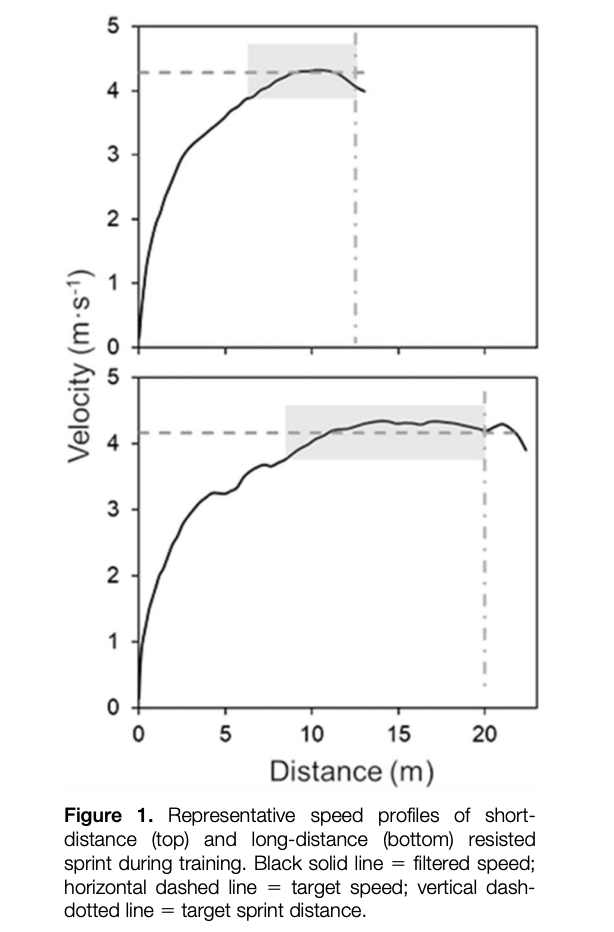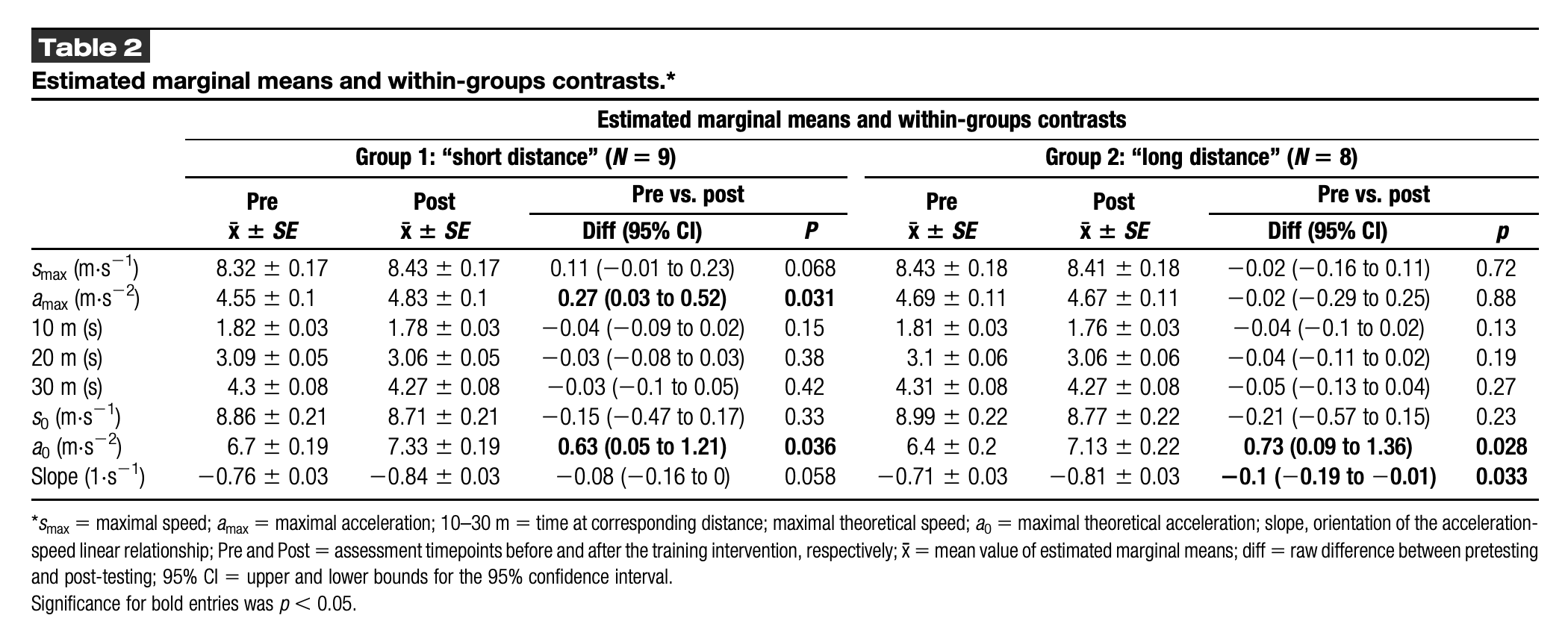Resisted sprinting (e.g., sled pulls) is a proven method for improving acceleration; however, optimal programming variables (distance, repetitions, and load) remain debated.
This study tested whether sprint distance distribution (shorter sprints with more reps vs. longer sprints with fewer reps), with equal total training volume, to determine the impacts on acceleration performance.
Studies like this provide simple yet meaningful coaching answers and can be easily implemented into our programs.
Let's dive in.
Are short or long heavy resisted sprints better for improving acceleration?
What Did the Researchers Do?
Groups
17 under-19 national-level male rugby players (mean age ~18, body mass ~85 kg) were split into two groups:
- Short-distance group (n=9): 8 × 12.5 m resisted sprints per session.
- Long-distance group (n=8): 5 × 20 m resisted sprints per session.
Programming
- An 8-week intervention, with 2 sessions per week, conducted in-season.
- Sled resistance load individualized to cause ~50% velocity decrement (~116% body mass).
- The total volume per session was 100 mL for both groups.
- Resistance was placed on a sled behind and pulled by a tether around the athlete.
Testing
- Sprint times at 10, 20, and 30 m.
- GPS-based acceleration-speed (a-s) profiles (max acceleration, max speed, theoretical a₀ and s₀, slope).

What Were the Results?
Large Acceleration Improvements
- Faster 10 m sprint times (large effect, p < 0.05).
- Higher theoretical maximal acceleration (a₀).
- Steeper acceleration-speed slope (greater acceleration orientation).
Within-Group Findings
- Short group: Significant gains in maximal acceleration (amax) and theoretical acceleration (a₀).
- Long group: Significant gains in a₀ and slope.
Both training structures worked equally well, while maximal speed (s₀, smax) showed no significant improvement.

What Does This Mean?
- Heavy sled sprinting (~50% velocity decrement) effectively improves short-distance acceleration in-season.
- Improvements were biased toward acceleration capacity (force-dominant sprinting) rather than maximal speed.
- Distance distribution (shorter vs. longer sprints) didn’t significantly change outcomes, suggesting flexibility in programming.
Limitations
- In-season training fatigue could have blunted adaptations.
- Only an 8-week intervention with no delayed follow-up testing.
Coach’s Takeaway
- Heavy sled sprinting (~50% vDec) is a reliable method to boost acceleration, even during the season.
- Programming can be flexible: both short (8×12.5m) and long (5×20m) sprints work if total resisted sprint volume is matched.
- Expect improvements in first-step explosiveness and 10 m sprint performance, not necessarily in max speed.
I hope this helps,
Ramsey
Reference
Botter, A., Cross, M.R., Da Lozzo, G., Floreani, M., Samozino, P., Morin, J-B., & Rejc, E. (2025). Volume-equated high-load resisted sprint training: Determining the longitudinal effects of varying distance and repetitions on acceleration performance in rugby players. Journal of Strength & Conditioning Research.




